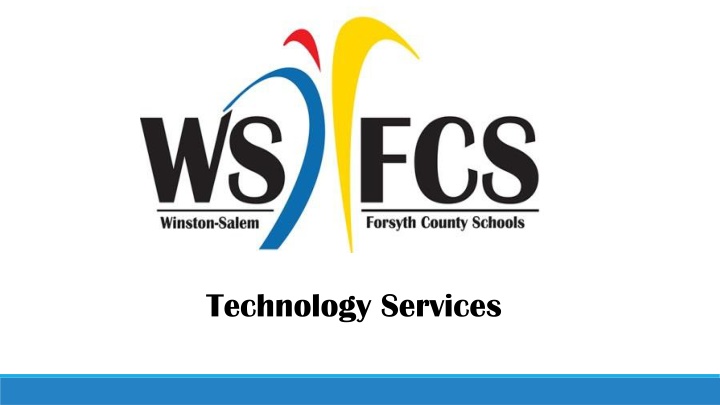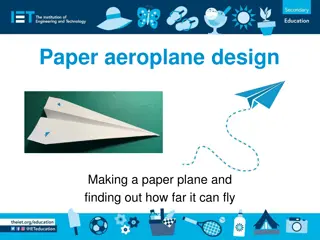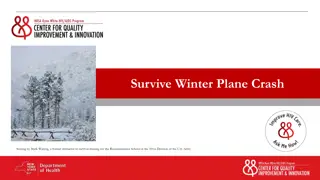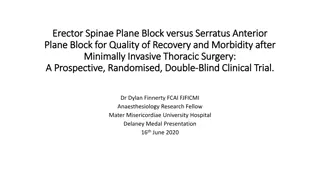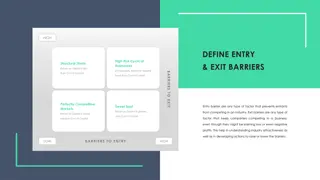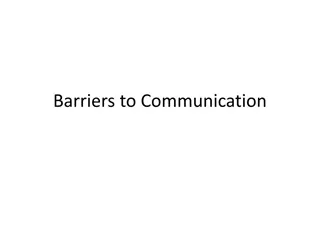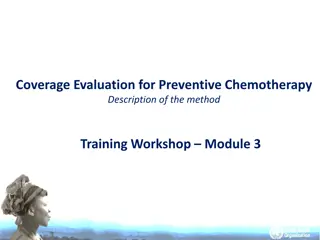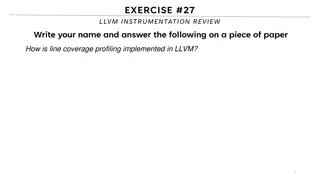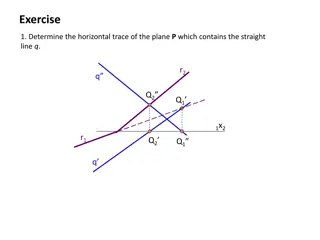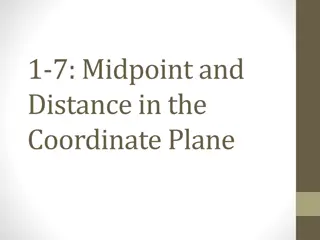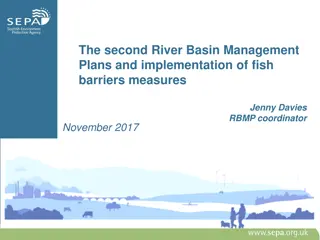Multiple Barriers Coverage Problem in the Plane
Given a set of barriers and sensors in a plane, the goal is to cover all barriers by moving sensors while minimizing the maximum moving distance. This problem has different cases and previous works have provided time complexities for various scenarios. The algorithms for both decision and optimization problems are outlined, along with the main stages of the solution approach.
Download Presentation

Please find below an Image/Link to download the presentation.
The content on the website is provided AS IS for your information and personal use only. It may not be sold, licensed, or shared on other websites without obtaining consent from the author.If you encounter any issues during the download, it is possible that the publisher has removed the file from their server.
You are allowed to download the files provided on this website for personal or commercial use, subject to the condition that they are used lawfully. All files are the property of their respective owners.
The content on the website is provided AS IS for your information and personal use only. It may not be sold, licensed, or shared on other websites without obtaining consent from the author.
E N D
Presentation Transcript
Technology Update WINSTON-SALEM/FORSYTH COUNTY SCHOOLS SEPTEMBER 2015
District Technology Needs District Technology Needs Major Initiatives Wireless Infrastructure and Switching Upgrade PC Refresh and Lifecycle Classroom Instructional Technology
Connectivity and Infrastructure Connectivity and Infrastructure Why do we need it? Mobile Computing Online Testing Bring Your Own Device (BYOD) Increased Reliance on Online Resources
Connectivity and Infrastructure Connectivity and Infrastructure Wireless Wireless Current State Grades 5 12 are complete with one access point per classroom (funded with RttT and local funding sources) Grades PreK 4 are covered with one access point for every four classrooms (funded with RttT)
Connectivity and Infrastructure Connectivity and Infrastructure Wireless Connectivity Infrastructure Buildout Wireless Wireless 2013 - 2014 2014 - 2015 2015 - 2016 2012 - 2013 HS Wireless/Switch Upgrade MS Wireless/Switch Upgrade ES Wireless/Switch Upgrade RttT Wireless/ERATE Switch Upgrade $915k ERATE/RttT Funding $905k County/EC Funding $630k Local Fund Balance $900k Unfunded 2012 2013 2014 2015 2016 ERATE Switch Upgrade (14) Schools 2012 - 2013 Interval Description RttT Wireless 1:3 $915k District Investment 2013 - 2014 Interval Description EC Classroom Wireless 1:1 $905k District Investment 2014 - 2015 Interval Description 1:1 Ratio $630k District Need 2015 - 2016 Interval Description 1:1 Ratio $900k District Need HS Wireless 1:1 MS Wireless/Switch Upgrade ES Wireless/Switch Upgrade
Connectivity and Infrastructure Connectivity and Infrastructure Wireless Wireless Wireless Infrastructure Costs - ERATE - RttT PreK 4th $900K 9th 12th $905K 5th 8th $630K Prek - 4th Grades 5th - 8th Grades 9th - 12th
Connectivity and Infrastructure Connectivity and Infrastructure LAN/WAN LAN/WAN Switch and Router Upgrade Increase WAN/LAN backbone to 10 GB Increase endpoint port speed to 1 GB for wireless and wired connections Majority of switch and router infrastructure (2100 devices) are end of life
Connectivity and Infrastructure Connectivity and Infrastructure ERATE ERATE ERATE Funding Opportunity ERATE Modernization Order Potential $150 per student funding for infrastructure $7.1 million for wireless completion and switch infrastructure WSFCS will be responsible for 20% (funded through RttT)
Device Lifecycle Device Lifecycle Device Refresh Device Refresh Why do we need it? Mobile computing Online testing Personalized learning BYOD supplements
Device Lifecycle Device Lifecycle Current State Device Counts by OS Current State Windows 8.1 206 Tablets 4700 - Windows XP is end of life - Devices have 512 MB or less - Not supported for online testing beginning 2015 - Mainly 8-10 year old Windows XP 23683 Windows 7 Pro 29798 Windows XP Windows 7 Windows 8 Tablets
Device Lifecycle Device Lifecycle Recent Deployments Recent Deployments 8,600 laptops to 5th- and 8th-grade science and HS biology 4,500 laptops to all full-time certified staff 1,200 iPads to K-2 teachers 1,900 laptops to 6th and 7th grades
Device Lifecycle Device Lifecycle Strategy Strategy Replace classroom desktop computers with Chromebooks Currently planning to rollout 13,000 Chromebooks this fall Mobile carts of devices for classroom sets 1:1 program pilots 20% annual refresh
Classroom Technology Classroom Technology Legacy Components Legacy Components
Classroom Technology Classroom Technology Current Components Current Components
Classroom Technology Classroom Technology Current State Current State 2007 - 2014 2014 - 2018 $18.6m District Investment $3.6m Unfunded $2.1m Unfunded $1.7m Unfunded 2007 2008 2009 2010 2011 2012 2013 2014 2015 2016 2017 2018 2019 2014 - 2016 Elementary Schools 2016 - 2017 Middle Schools 2017 - 2018 High Schools 2006 Construction Bond Technology Projects 1257 Full Classroom Installations 2007 - 2014 2013 - 2018 Complete All Classroom Technology Solutions Partial Classroom Installation: 1335 Full Classroom Installations: 849 $7.4m Unfunded Title 1, PTA, and School Funded, Matching Funds 276 Full Classroom Installations Title 1, PTA, and School Funded 1335 Partial Classroom Installations Does not include estimates to upgrade and sustain current installations
Current and Potential Funding Sources Current and Potential Funding Sources Wireless and Switch Infrastructure: $7.1 M ERATE/RttT PC Refresh and Lifecyle $3.4 M County/Credit Line Classroom Instructional Technology $ ? M County Recurring Funding?
